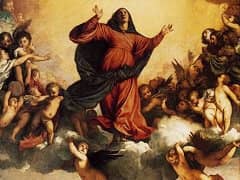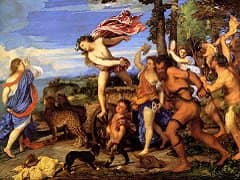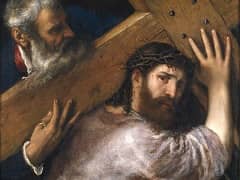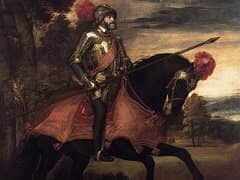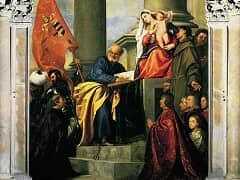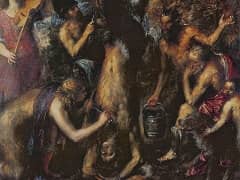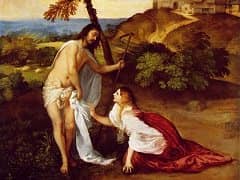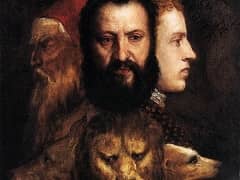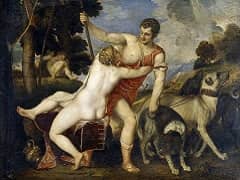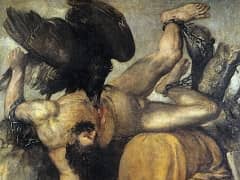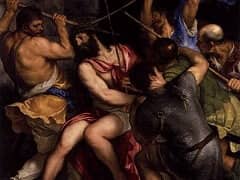The Death of Actaeon, 1559-75 by Titian
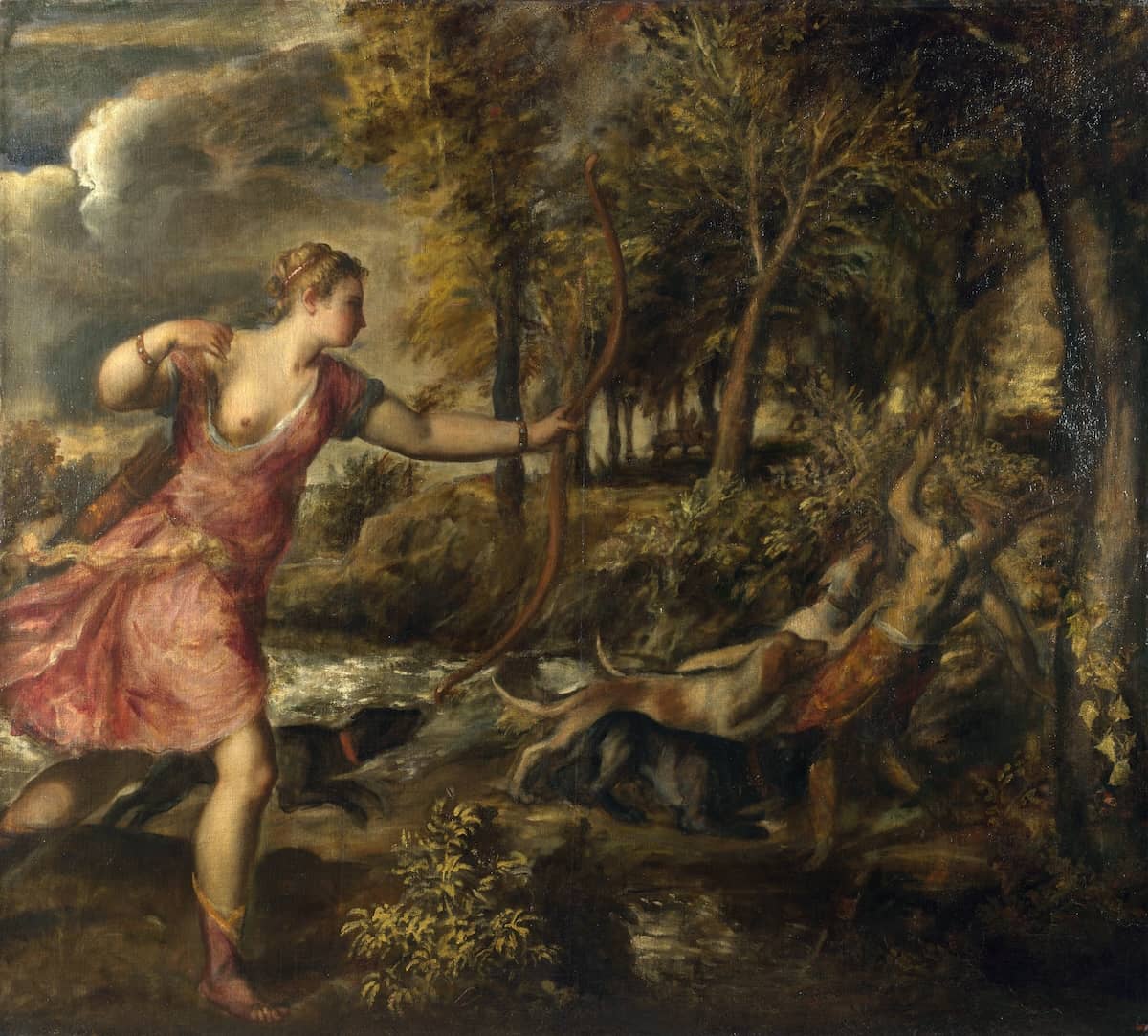
The story of Actaeon had been passed down from antiquity in the third book of the Latin poet Ovid's Metamorphoses. Titian would probably have first read it in his own language, in one of the
many Italian translations of Boccaccio's useful compendium of classical tales, the Genealogia Deorum. Boccaccio's version is concise in the extreme:
"Actaeon was a hunter. One day, tired from the chase, he had gone into the valley of Gargafia, probably to quench his thirst, for there was a fresh and clear stream in the valley, and it
happened that he beheld Diana in the spring, who was naked and washing herself. Diana, discovering this, took it ill, and she took some water in her hands and splashed it in Actaeon's face,
saying "Go say what you have seen, if you can". And Actaeon was immediately changed into a stag, and when his hounds saw him he was killed immediately and gashed with their teeth and eaten up."
Titian shows the grim climax of the story, taking the liberty of introducing Diana into the scene, as huntress, administering the coup de grace with an arrow from her bow - and revealing her
right breast in the process. But the picture's faint glimmerings of eroticism are shadowed by intimations of mortality. Actaeon, whose head has already metamorphosed into that of a stag,
seems as though he is attempting vainly to call out to his hounds, even as they savage him. This is a detail which suggests that Titian had taken the trouble to familiarise himself with Ovid
in the original by the time he painted the work. In the Metamorphoses, Diana's victim "longed to cry out, 'I am Actaeon, recognise your master'; the words refused obedience to his will."
Before Titian, the theme of Diana and Actaeon had been treated light-heartedly by the artists of the Italian Renaissance. The subject had often been deemed appropriate to wedding
celebrations, for example, with the bride-to-be portrayed as Diana - a comical hint to any would-be Actaeons among the bridegroom's friends. But in Titian's hands, the theme acquired a
tragic dimension. It is possible that the artist intended some moral to be read into the work, perhaps concerning the perils of lubricity. Titian had almost singlehandedly invented erotic
art as a genre, in his many depictions of the female nude; so maybe there was even an element of self-confession at work, in this picture of a man turned into a beast by the spectacle of a
nude goddess, and hounded by his own dogs as if by his own sexual passions.

